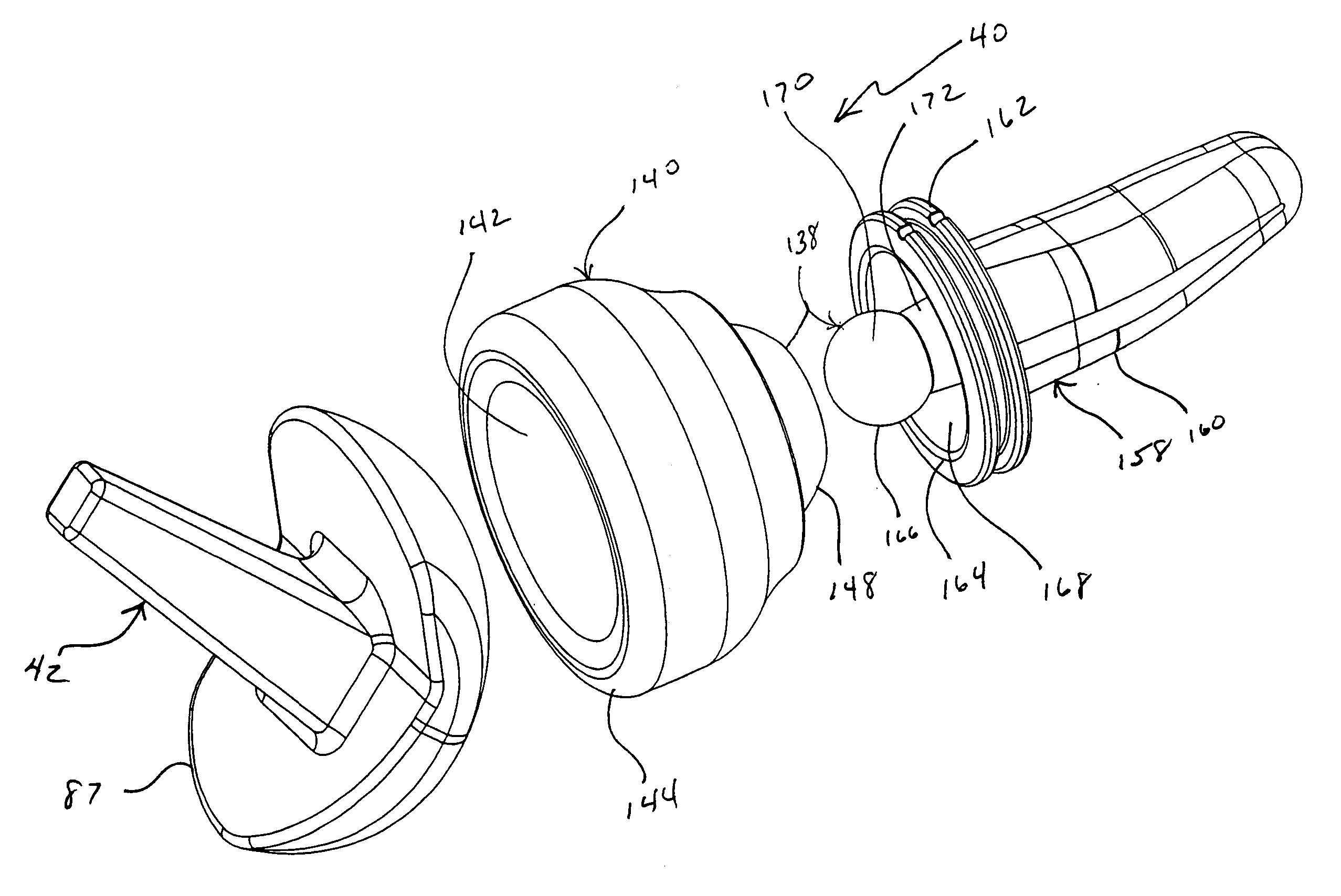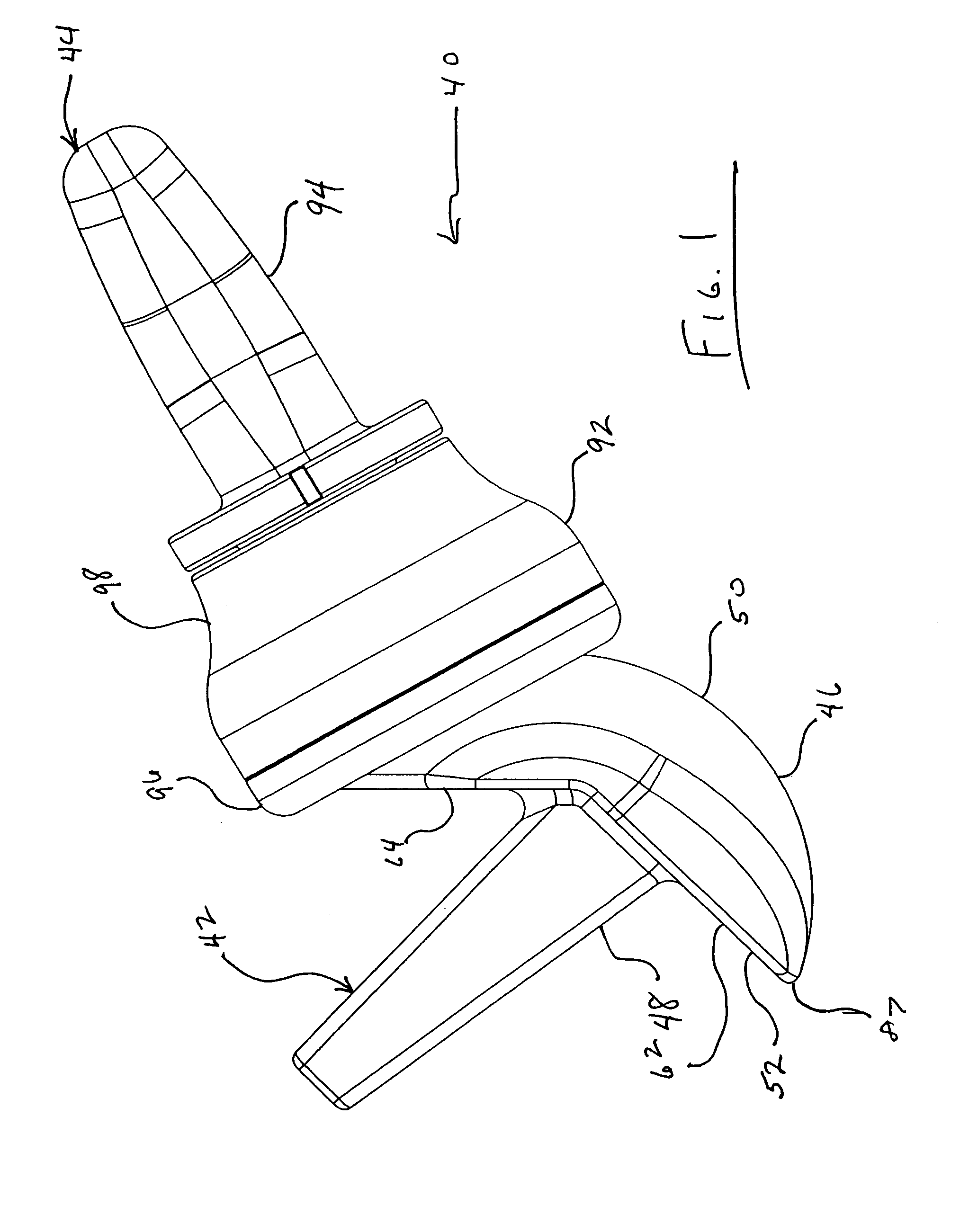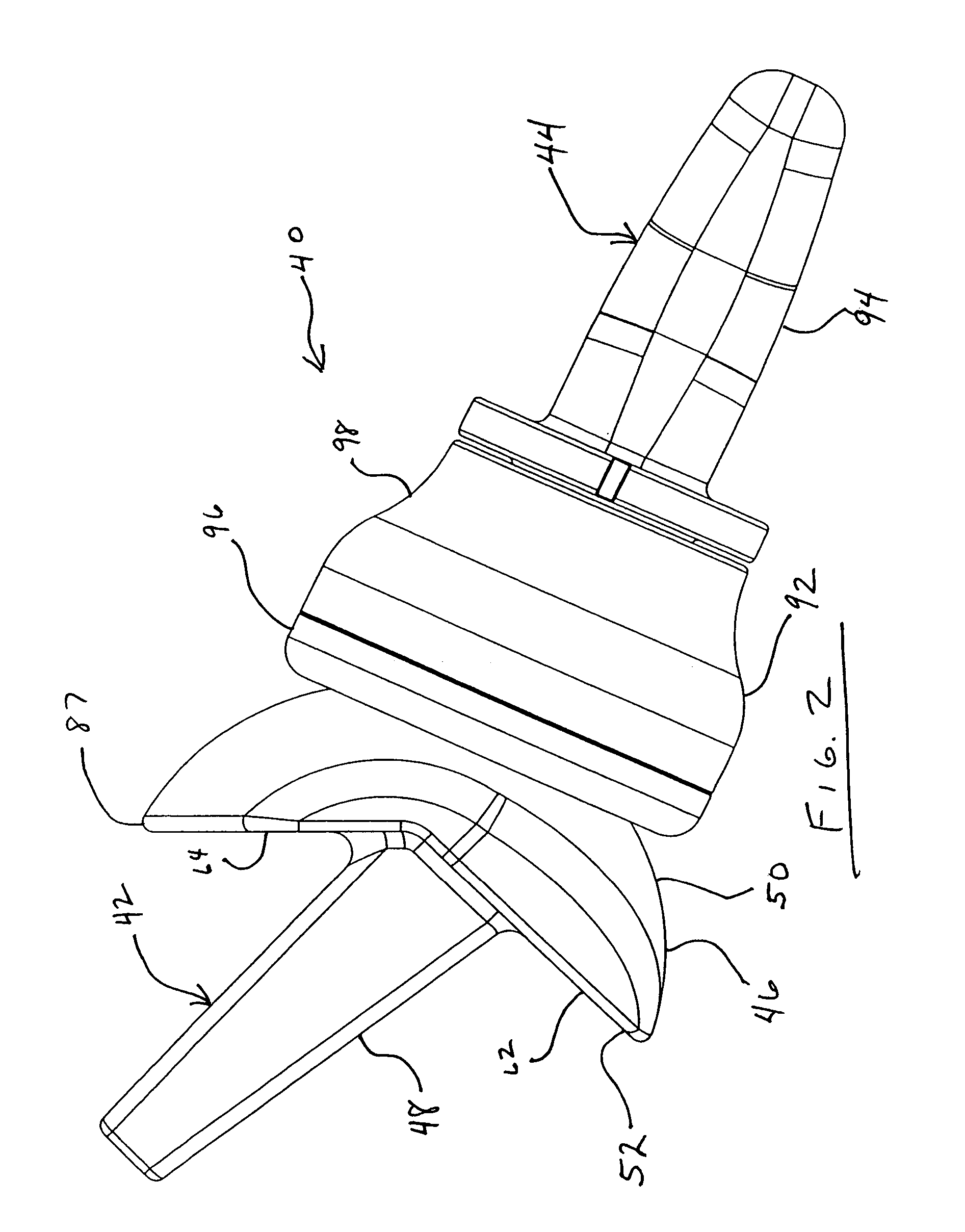Radial-capitellar implant
a technology of radial capitellar and joint replacement, which is applied in the field of joint replacement prostheses for the human elbow, can solve the problems of forearm, affecting the function of the elbow, and damage to the head of the radius, so as to improve the wear characteristics, and reduce the effect of radial head damag
- Summary
- Abstract
- Description
- Claims
- Application Information
AI Technical Summary
Benefits of technology
Problems solved by technology
Method used
Image
Examples
Embodiment Construction
[0059]The radial-capitellar implant 40 of the present invention generally includes capitellar prosthesis 42 and radial prosthesis 44. Referring initially to FIGS. 1–5 capitellar prosthesis 42 and radial prosthesis 44 are shown in various views as articulated with one another in various degrees of flexion and extension.
[0060]Referring particularly to FIGS. 1–6 and 11–16 capitellar prosthesis 42 generally includes body 46 and stem 48. Stem 48 is joined to body 46 extending outwardly from bone interface surface 52 of body 46. Articular face 50 presents a substantially spheroidal surface. Body 46 and stem 48 may be integrally formed from a single piece of material such as by casting or machining.
[0061]Articular face 50 is smooth and may be mirror polished to facilitate smooth articulation. Articular face 50 may present a substantially spheroidal convex surface
[0062]Articular face 50 extends over an arc of approximately 170 to 190 degrees in a first direction and an arc of 80 to 100 degr...
PUM
| Property | Measurement | Unit |
|---|---|---|
| lateral angle | aaaaa | aaaaa |
| angle | aaaaa | aaaaa |
| obtuse angle | aaaaa | aaaaa |
Abstract
Description
Claims
Application Information
 Login to View More
Login to View More - R&D
- Intellectual Property
- Life Sciences
- Materials
- Tech Scout
- Unparalleled Data Quality
- Higher Quality Content
- 60% Fewer Hallucinations
Browse by: Latest US Patents, China's latest patents, Technical Efficacy Thesaurus, Application Domain, Technology Topic, Popular Technical Reports.
© 2025 PatSnap. All rights reserved.Legal|Privacy policy|Modern Slavery Act Transparency Statement|Sitemap|About US| Contact US: help@patsnap.com



